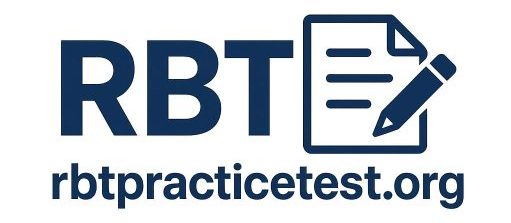This page of our free RBT Exam Study Guide covers Documentation and Reporting, based on Section E of the RBT Task List (2nd Edition). This section accounts for approximately 10 questions on the Registered Behavior Technician exam, making it a critical component for your success.
Section E outlines five essential tasks that every RBT must master:
- Effectively communicate with a supervisor in an ongoing manner
- Actively seek clinical direction from a supervisor in a timely manner
- Report other variables that might affect the client in a timely manner
- Generate objective session notes for service verification
- Comply with legal, regulatory, and workplace documentation standards
These skills ensure that RBTs maintain ethical standards, legal compliance, and clinical integrity throughout therapy delivery. Since ABA is a data-driven field, proper documentation and clear communication support accurate treatment planning, progress monitoring, and coordination with supervisors.
In this guide, you’ll learn how to write objective session notes, identify when to escalate client-related concerns, and follow HIPAA-compliant data handling procedures.
Task E-1: Effectively communicate with a supervisor
Clear and continuous communication with your supervisor is a core part of the RBT role. Behavior technicians must actively engage with their BCBA or BCaBA to ensure effective therapy delivery and adherence to ethical standards.
Supervision is required for at least 5% of the RBT’s total direct hours per month. However, communication should go beyond scheduled supervision. RBTs are expected to initiate contact with supervisors whenever they have questions, concerns, or need clarification, especially when client safety or treatment integrity is involved.
To communicate effectively, RBTs should:
- Engage in ongoing communication with the clinical team regarding client progress and concerns.
- Speak professionally and respectfully, using clear, objective language.
- Request clarification when instructions are unclear. For instance: “Could you show me how to implement this goal?”
- Know when to escalate urgent issues (e.g., injury, sudden behavior changes) versus when to wait for scheduled supervision.
- Understand boundaries and respect supervisors’ time for observation, analysis, and planning.
- Accept and apply feedback constructively to improve client outcomes. Feedback is not personal—it’s part of improving therapy quality.
- Offer feedback upward when appropriate, using a professional tone. RBTs can express concerns or ask for additional support when needed.
RBTs should also document key communications and follow up as needed to ensure alignment on client care. If regular supervision is not occurring, RBTs are encouraged to contact a senior clinical team member or C.A.B.A office for support.
Task E-2: Actively seek clinical direction from a supervisor
Registered Behavior Technicians (RBTs) must take initiative in seeking clinical direction. When uncertainty arises, especially regarding treatment goals or behavior plans, do not proceed without supervisor input. Acting without proper guidance may compromise client safety or therapy effectiveness.
A timely response is crucial but depends on clinical judgment. If the situation involves potential harm, notify your supervisor immediately. When urgency is unclear, err on the side of caution and communicate promptly. Waiting too long can delay interventions and reduce treatment integrity.
Common scenarios that require supervisor input include:
- New or escalating challenging behaviors: If the behavior is harmful or disruptive, report it after the session and document it in your notes.
- Poor client response to a behavior plan: If current strategies are ineffective, flag it for supervisor review.
- Uncertainty about how to conduct a goal or use a specific intervention: Always clarify before the next session.
- Missing materials (e.g., stimuli, data sheets): Let your supervisor know before you’re fully out. Avoid delays by preparing in advance.
- Barriers to progress: Report environmental or familial issues (e.g., interruptions during therapy) that affect implementation.
When reporting these situations, fill data sheets accurately, analyze trends, and review data with your supervisor to guide decision-making. This process helps refine strategies and maintain treatment fidelity. You may also request an overlap session to receive in-person support.
Task E-3: Report other variables that might affect the client
RBTs must recognize and report variables that may impact client behavior or therapy outcomes. These variables, often called setting events, create a background context that can influence how a client responds to their environment, even if they occur hours or days before the session.
Setting events differ from immediate antecedents. While an antecedent triggers behavior in the moment, setting events shape the likelihood of certain behaviors emerging under specific conditions.
Examples of setting events and external variables include:
- Illness or physical discomfort (e.g., fever, allergies, pain)
- Sleep disturbances, such as difficulty falling or staying asleep
- Hunger or unmet biological needs
- Changes in family or home dynamics (e.g., divorce, relocation, new caregiver)
- Medication changes or the start of a new medical or therapeutic treatment
- New therapies or interventions that overlap with ABA sessions
- Caregiver-reported concerns, especially those related to progress, behavior, or scheduling
- Signs of abuse or neglect, which require immediate reporting to both the supervisor and child protection authorities
Behavior technicians must use clinical judgment to determine urgency. When a factor directly disrupts a session, like a client falling asleep during therapy, report the issue immediately. In less urgent cases, such as a scheduled start of occupational therapy next month, the update can wait for the next overlap or meeting.
Regardless of urgency, document these variables in your session note. Include observable evidence, caregiver statements, and any actions taken. RBTs play a critical role in providing supervisors with the context needed to make informed clinical decisions.
Task E-4: Generate objective session notes to describe what occurred during the sessions
RBTs are responsible for generating objective session notes that accurately document, record, and summarize what occurred during each therapy session. These notes serve as legal and clinical proof of services delivered and are a vital part of the client’s medical record.
Each session note should include the following standardized components:
- RBT’s full name and credential (e.g., John Doe, RBT)
- Session date and exact time range (start and end times)
- Skills and behaviors targeted during the session
- The client’s responses to interventions (e.g., prompted, independent, resistant)
- Quantitative data, such as frequency counts, trial results, or percentage correct
- Any barriers that interfered with the session (e.g., environmental disruptions)
- Relevant information shared by caregivers (e.g., illness, sleep disturbance)
Session notes must always remain objective. RBTs should focus on observable and measurable behaviors. Avoid making assumptions or including emotional language. For instance, write “client required two verbal prompts to complete a task” rather than “client was lazy.” If subjective information is necessary (e.g., a caregiver’s report), attribute the source directly:
Write your session notes promptly. Most organizations require completion within 24 to 48 hours, but best practice is to finish the note immediately after the session. Waiting increases the risk of omissions or inaccurate recall, which compromises service verification.
These notes are often read by multiple stakeholders, including supervisors, funding sources, and legal reviewers, so professional tone and accuracy are critical. If you wouldn’t say it in a team meeting or clinical review, don’t include it in your notes.
Task E-5: Comply with applicable legal, regulatory, workplace data collection, storage, transportation, and documentation requirements
RBTs must strictly comply with all legal, regulatory, and workplace policies related to data handling. Client documentation, including session notes, data sheets, and treatment plans, contains protected health information (PHI) and must be managed with the highest level of care.
Under HIPAA, RBTs are required to protect all client information and take preventive steps to avoid unauthorized access, whether intentional or accidental. Employers often enforce HIPAA compliance through internal policies, software systems, and staff training.
To maintain confidentiality, RBTs should:
- Secure data sheets and session notes immediately after use, whether physical or digital
- Use HIPAA-compliant platforms for electronic documentation and data collection
- Never share passwords, access codes, or devices used for client documentation
- Avoid taking client data home or using personal devices for documentation
- Lock paper documents in a secure briefcase and store it in a locked trunk when traveling
- Transport only essential documents when providing in-home services
If an RBT is responsible for carrying client records, double security is expected, lock the documents in a box and store them in a locked vehicle. This practice minimizes the risk of data breaches and supports confidentiality standards.
Confidentiality extends to how data is stored, reviewed, and disposed of. Files should never be left in open areas or accessed by unauthorized individuals. Every piece of client information must be protected as part of the client’s permanent medical record.
Failing to adhere to HIPAA and workplace policies can result in legal consequences, loss of certification, or harm to client trust. RBTs are ethically and professionally obligated to secure all data, remain informed of privacy laws, and comply with procedures set by their agency and state, many of which are outlined in the RBT exam study guide.
RBT Documentation & Reporting practice questions
To reinforce your understanding of this section, you can practice with our RBT Exam – Practice Test Section E. This section-wise test is designed to help you apply key concepts from Task List E and prepare effectively for the RBT exam.

